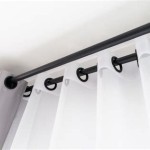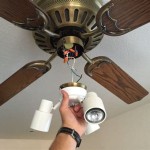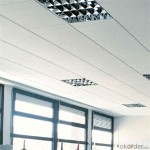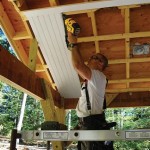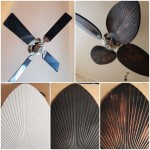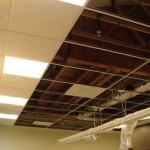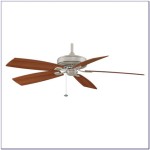How To Hang a Mobile From the Ceiling Without Drilling
Hanging a mobile, whether it's a decorative piece for a nursery, a kinetic sculpture, or a classroom learning tool, can significantly enhance a space's aesthetic appeal. However, the prospect of drilling into the ceiling often presents a significant deterrent. Drilling can cause structural damage, create unsightly holes, and may not be permissible in rental properties. Fortunately, several effective and damage-free methods exist for securely suspending a mobile from the ceiling without resorting to drilling.
The selection of an appropriate method depends on several factors, including the mobile's weight, the ceiling's material (painted drywall, textured plaster, or suspended tile, for example), and the desired permanency of the installation. Each approach offers a unique set of advantages and limitations, and careful consideration of these factors is crucial for ensuring a successful and secure installation.
Utilizing Adhesive Hooks and Hangers
Adhesive hooks represent a widely accessible and straightforward solution for hanging lightweight mobiles without drilling. These hooks employ a strong adhesive backing that bonds to the ceiling surface, providing a load-bearing point from which to suspend the mobile. The effectiveness of adhesive hooks hinges on several key considerations: the weight capacity of the hook, the cleanliness of the ceiling surface, and the proper application of the adhesive.
Before installation, it is imperative to select an adhesive hook with a weight rating that comfortably exceeds the mobile's actual weight. Overestimating the necessary weight capacity provides a margin of safety and reduces the risk of the hook detaching over time. The weight capacity is typically indicated on the hook's packaging, and it is advisable to choose a hook with a significantly higher rating than the mobile's weight, particularly if the mobile is exposed to any potential forces (e.g., drafts from open windows or doors).
Surface preparation is equally crucial. The ceiling surface must be clean, dry, and free from dust, grease, or any other contaminants that could impede the adhesive's bonding ability. Clean the area with a mild detergent solution and allow it to dry completely before proceeding. Isopropyl alcohol can also be used to remove stubborn residue, but ensure it evaporates fully before applying the hook.
When applying the adhesive hook, carefully follow the manufacturer's instructions. Typically, this involves peeling off the protective backing and firmly pressing the hook against the prepared ceiling surface for a specified duration (usually 30 seconds to a minute). This ensures that the adhesive properly bonds to the surface. Allow the adhesive to cure for the recommended time (often 24 hours) before hanging the mobile. This curing period allows the adhesive to reach its maximum strength, minimizing the risk of premature failure.
Several types of adhesive hooks are available, each designed for specific applications. Command Strips, for instance, are renowned for their strong adhesive hold and clean removal. These strips utilize a two-part system, with one strip adhering to the hook and the other to the ceiling. This design allows for easy removal without damaging the paint or leaving behind sticky residue. Other types of adhesive hooks feature a single adhesive pad. The choice depends on the weight of the mobile and the desired ease of removal.
For exceptionally light mobiles, consider using adhesive putty or mounting tape. These options offer a less permanent solution and are suitable for temporary installations or mobiles that weigh only a few grams. However, their holding power is significantly lower than that of dedicated adhesive hooks, so they are not recommended for heavier or more valuable mobiles.
Leveraging Existing Structures: Hooks, Light Fixtures, and Beams
An alternative approach involves utilizing existing structural elements in the ceiling to suspend the mobile, thus circumventing the need for drilling or adhesive. This method is particularly suitable for ceilings that already possess hooks, light fixtures with accessible mounting points, or exposed beams.
If the ceiling has an existing hook, ensure that it is securely anchored and capable of supporting the mobile's weight. Inspect the hook for any signs of rust, corrosion, or looseness. If the hook appears unstable, it is advisable to reinforce it or replace it entirely. A simple test involves applying a moderate amount of downward pressure to the hook; if it wobbles or feels insecure, it should not be used to hang the mobile.
Light fixtures can often provide a convenient mounting point, particularly if they have a decorative canopy or a metal loop designed for suspending ornaments. Disconnect the power to the fixture before attempting any modifications or attachments. Carefully examine the fixture's construction to identify a suitable point for attaching the mobile. Ensure that the chosen point is strong enough to support the mobile's weight without compromising the fixture's stability or electrical safety.
Use a lightweight chain, wire, or durable string to connect the mobile to the light fixture. Avoid using materials that could conduct electricity or interfere with the fixture's operation. Adjust the length of the chain or string to achieve the desired height for the mobile. Once the mobile is securely attached, restore power to the light fixture and verify that it functions correctly.
Exposed beams, commonly found in rustic or industrial-style interiors, offer a robust and aesthetically pleasing solution for hanging mobiles. Wrap a strong rope or wire around the beam and securely attach the mobile to the loop. Ensure that the rope or wire is capable of withstanding the mobile's weight and that the knot or fastening is tightly secured. The visual appeal of this method often complements the overall decor of the room, adding a touch of rustic charm.
When utilizing existing structures, prioritize safety and stability. Always err on the side of caution and choose a mounting point that is demonstrably strong and secure. Regularly inspect the attachment point to ensure that it remains stable and that the mobile is hanging safely.
Employing Tension Rods and Spring-Loaded Poles
Tension rods and spring-loaded poles offer a versatile and adaptable solution for hanging mobiles without drilling, particularly in situations where other methods are impractical or unsuitable. These devices utilize a compressive force to secure themselves between the floor and the ceiling, providing a stable support structure from which to suspend the mobile.
Tension rods, commonly used for shower curtains or closet organization, consist of two telescoping tubes that are adjusted to fit the desired space. A spring mechanism within the rod exerts outward pressure against the walls or ceiling, creating a secure and stable hold. Spring-loaded poles, on the other hand, typically feature a single pole with a spring-loaded foot that presses against the ceiling. These poles are often used for photography backdrops or displaying merchandise.
When selecting a tension rod or spring-loaded pole for hanging a mobile, consider its weight capacity and adjustable height range. The device must be capable of supporting the mobile's weight without buckling or slipping. Furthermore, it should be adjustable to the appropriate height to ensure that the mobile is positioned at the desired level.
Installation of a tension rod or spring-loaded pole typically involves extending the rod or pole to a length slightly greater than the distance between the floor and the ceiling. Compress the spring mechanism and carefully position the rod or pole between the floor and the ceiling. Gradually release the spring mechanism, allowing it to exert pressure against the surfaces. Ensure that the rod or pole is securely anchored and that it does not wobble or slip.
Once the tension rod or spring-loaded pole is securely in place, attach the mobile to it using a hook, chain, or wire. Distribute the weight evenly to prevent the rod or pole from becoming unbalanced. Regularly inspect the device to ensure that it remains stable and that the mobile is hanging safely.
Tension rods and spring-loaded poles are particularly useful in rental properties or situations where drilling is not permitted. They offer a temporary and easily removable solution for hanging mobiles without causing any damage to the ceiling or walls. However, they may not be suitable for extremely heavy mobiles or ceilings with uneven surfaces.
Before implementing any of these methods, it is advisable to consult with a professional handyman or contractor, especially if there are concerns about the ceiling's structural integrity or the mobile's weight. A professional can assess the situation and recommend the most appropriate and safe solution for hanging the mobile without drilling.
Ultimately, the best method for hanging a mobile without drilling depends on the specific circumstances of the installation. By carefully considering the mobile's weight, the ceiling's material, and the desired level of permanence, it is possible to achieve a secure and aesthetically pleasing result without resorting to damaging drilling techniques. Choosing the right approach ensures the mobile enhances the space while preserving the integrity of the ceiling.
How Do You Hang Your Mobiles We Montessori
How Do You Hang Your Mobiles We Montessori

Simple Ways To Hang A Mobile From The Ceiling 13 Steps

Simple Ways To Hang A Mobile From The Ceiling 13 Steps

Diy Ceiling Hook For Hanging Mobiles Nursery By Lullabymobiles 5 00

Simple Ways To Hang A Mobile From The Ceiling 13 Steps

Diy Baby Mobile How To Make A Bird

Simple Ways To Hang A Mobile From The Ceiling 13 Steps

Baby S Hanging A Mobile Safely Tik Tak Design Co

Simple Ways To Hang A Mobile From The Ceiling 13 Steps
Related Posts

